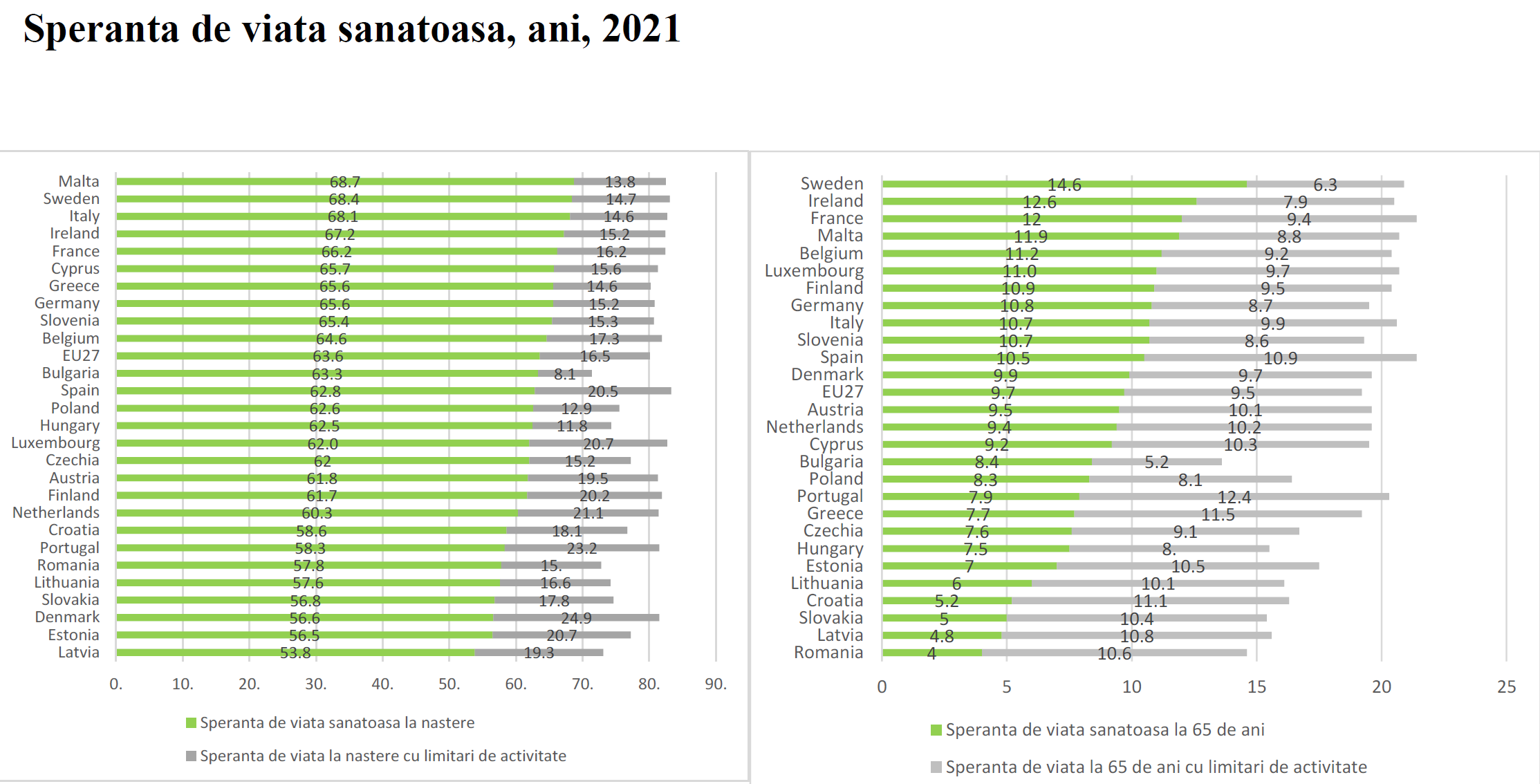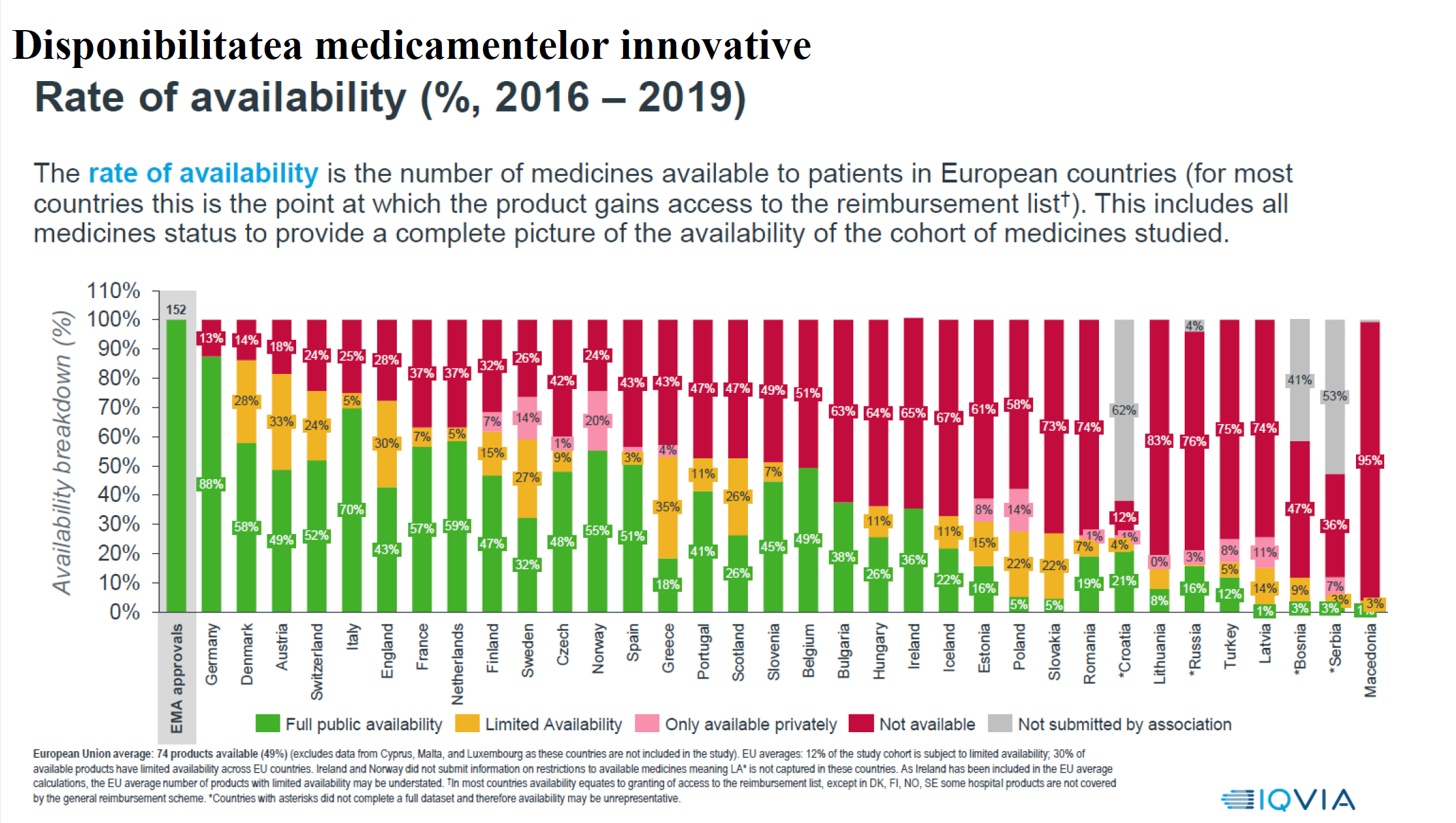
Availability of innovative medicines in Romania or access to innovative medicines is very low. In the period 2016-2019, the European Medicines Agency approved 152 innovative drugs. In Romania, we only have access to 39 of them, Ionuc Dumitru, chief economist of Raiffeisen Bank, said on Wednesday at a conference on medical topics organized by Cursdeguvernare.ro.
I looked a bit at health care indicators from the point of view of an economist, – explained Dumitru. He analyzed how Romania works at the European level, at the level of the resources we allocate and at the level of the results we get with the allocated resources.
The figures represent government spending on health care as a percentage of GDP – multi-year averages. “In the period 1995-2021, we allocated an average of 3.8% of GDP from the budget against the European average of 6.7%. That is, we allocated approximately half of what is allocated in Europe. It should be noted that Romania is at the bottom of the European ranking from this point of view. Only Cyprus has a smaller allocation than Romania,” said the Romanian economist.

If we look at the figures in euros per capita, to make them comparable (since the euro from Romania is not the same as the euro from Germany in terms of purchasing power), we put the figures in terms of PPS (purchasing power standard) and we see that we are again about halfway to the European average of 1,310 euros per capita in Romania against 2,636 euros per capita in Europe on average.
Watch Ionut Dumitru’s presentation here
Romania spends more on defense, public order and security than the European average
However, let’s also look at how important health care is as an area of the public budget, and we will see that if we compare public spending with health care in total public spending, we will again be at the bottom of the European ranking.
Romania allocates more than the European average of total public spending to defense and public order and security, while Romania allocates less to health and education. Not just as a percentage of GDP or per capita, but also as a percentage of total government spending, says Dumitru.
If we look at the types of expenses within expenses, namely salaries, investments and the purchase of goods and services, we will see that in Romania we allocate 21.1% of the amount from the health care budget to salaries (compared to 17, 1% – on average in Europe), and we allocate only 4.4% of the total public spending on health care to investments, compared to almost double the average in Europe, he believes.

If we look at the preventive part, we will find that it is neglected. In general, the share of prevention costs in total health care costs is less than 2%, that is, towards the end of the rating in Europe.
In Romania, healthy life expectancy at age 65 is only 4 years
Healthy life expectancy at birth in Romania is 57.8 years, compared to the European average of 63.6, and we add to this 57.8 years another 15 years of life expectancy with activity limitations, with various diseases that we must to take with you.
In addition, in Romania, healthy life expectancy at age 65 is only 4 years.
In other words, if you turn 65, you live another 4 healthy years, and then another 10.6 years with problems, with activity limitations. And that puts us at the bottom of the European rankings, the average for Europe is almost 10 years of healthy life expectancy at 65, with another 9.5 years added.
We have twice the average European rate of preventable or curable diseases
We are at the top of the European ranking. Based on the numbers, we will see that in 2020 one death out of three will be avoided.

To put it very simply, every third person dies within a few days, Ionuc Dumitru also said.
The availability of innovative medicines in Romania or access to innovative medicines is very low if we look at the number of medicines that have been approved during the period by the European Medicines Agency. In the period 2016-2019, 152 innovative medicines were approved. In Romania, we have access to only 39 of them.
About 75% of those approved at that time were not available for Romania. If we look at the time needed to gain access to these innovative medicines in Romania, we see that they appear here after about 3 years (883 days), compared to 120 days in Germany, explained the Romanian researcher.
Source: Hot News
Lori Barajas is an accomplished journalist, known for her insightful and thought-provoking writing on economy. She currently works as a writer at 247 news reel. With a passion for understanding the economy, Lori’s writing delves deep into the financial issues that matter most, providing readers with a unique perspective on current events.